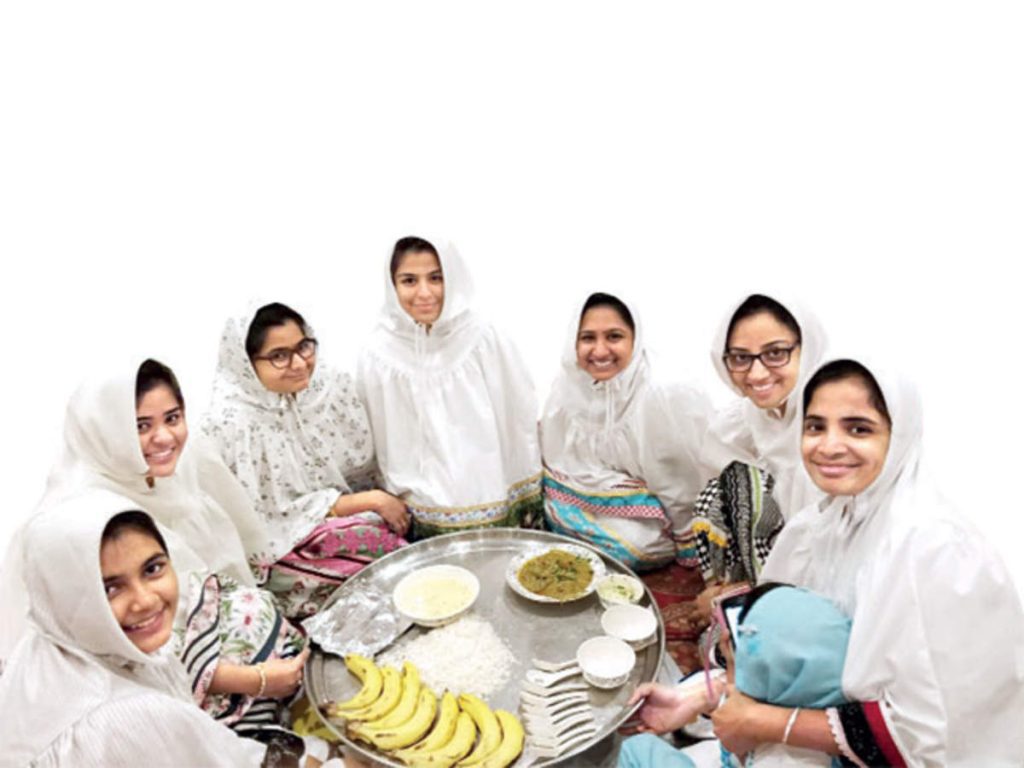The Muslim community in South Asia is composed of the majority Sunni and the minority Shi’i sects. Shi’is are divided into two major groups: the larger Twelver and the smaller Isma’ili sect. The Bohra sect and Khojas are sister subsects of the Isma’ili branch. Among the Bohras there are several divisions—Daudi, Sulaymani, Aliya, and Mahdibaghwalla, that arose as a result of debates about succession (nass) of the agent (da’i or sayyedna) of the hidden Imam. The da’is came to India in the eleventh century to spread the Isma’ili faith. Today, da’is are no longer engaged in outwardly directed propaganda work.
Although a professional class of Bohras does exist, they are primarily a trading community and are relatively prosperous vis-a-vis other Muslim sects in western India, with the possible exception of the sister Khoja sect.
While the Bohra sect is scattered all over the world, their largest concentration outside South Asia is in East Africa. Bohras are mostly urban based and most live in community enclaves (mahallehs) that are characterized by homes, shops, secular schools, religious schools (madraseh), mosques, community halls, and occasionally a cemetery with a shrine. The religious life of the sect is overseen by a well-organized cleric class, with the da’i or sayyedna at the apex and his local agents or amels at the grassroots. Between the two extremes are various religious officials sanctioned to perform different religious duties such as leading the congregation in prayer, giving religious counsel, overseeing the application of personal law, and so on.
The Texture of Bohra Islam
The religious lives of the Bohra include seven fundamental duties. Affection for the Prophet Mohammad and his relations ‘‘is walaya, the first pillar of Islam.’’ ,prayers (ebadat), tax (zakat), fasting in the month of Ramadan (rowzeh), pilgrimage to Mecca (hajj), religious defense (jihad), and obedience to the Twenty-First Hidden Imam, Tayeb Abu al-Qasem Amir al-Momenin.
For the Bohras, like other Shi’i sects, to be a Muslim is to offer allegiance to a person as well as to a message, and allegiance is due to those acknowledged to be the legitimate successors of the Prophet. Bohras believe that after his death the Prophet intended Ali, his son-in-law and cousin, to succeed him, and after Ali, authority would be designated to certain of those among his descendants through Fatemeh, who was the Prophet’s daughter and Ali’s wife, and the sole source of grandchildren for the Prophet. Abu Bakr, whose adherents came to be called the Sunnis, usurped the caliphate. For the Shiis, Ali’s role as imam is a matter of designation (nass) both by God and His Prophet, and this designation is both political and spiritual. A consequence and characteristic of this belief is an emotional devotion to the cause and persons of the household of the Prophet who are held up as paradigms of behavior.
Following the imams are the dais, or religious leaders of the missionary effort (da’wa), and other holy persons. Year-round expression of popular piety is the hallmark of the Bohra sect. Bohras hold religious ceremonies on the death or birth anniversaries of their Imams but Moharram rituals are part of a rich fabric of their religious activities. During Moharram, devotional allegiance to the Prophet and his family is seen most clearly and forcefully in the rituals commemorating the martyrdom of Hosayn at the Battle of Karbala.
Taken from The Women of Karbala by Kamran Scot Aghaie
